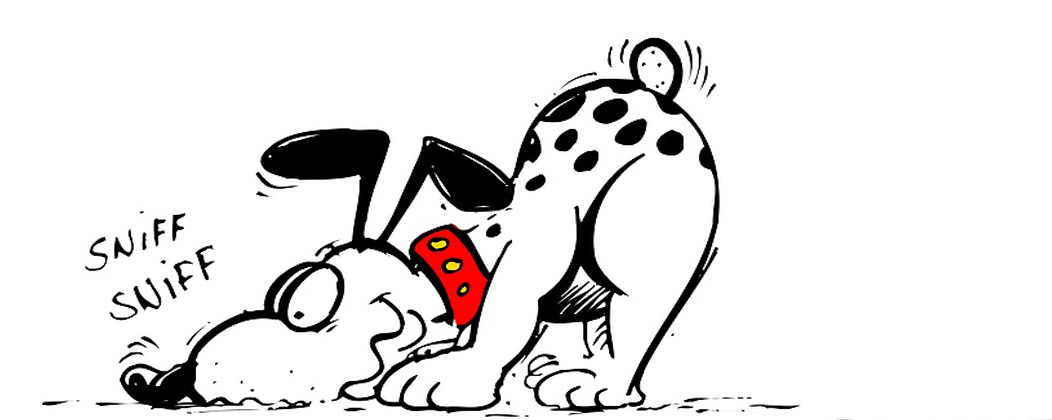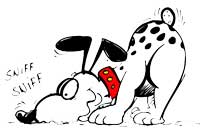
Friday afternoon I had a call with a client I built a website for back in March. Before I realized it, I was comparing their website to the family dog. Not a typical analogy, but it worked in the situation and the client understood the point I was trying to make.
Who’s Taking Care of Fido?
In my house I take care of the family dog. I’m not a big fan of our English Lab, but I’m still the one who makes sure he is fed, watered, and let in and out four hundred times a day. I am the caregiver even if I’m far from a dog lover.
I much prefer my three cats, which pretty much take care of themselves. Fill up the food bowls and call it good. Not only do my cats bath themselves, I can leave them home alone for an extended period of time. The dog, well, not so much. He is work and he needs maintenance and attention every day.
I’ve heard the more love you give your dog, the better relationship you’ll have with the animal and the more benefit you’ll obtain. I’ve yet to practice this advice myself, but I do believe it is true and I absolutely believe your website is the similar. Just like the family dog, someone has to take care of your website, nurture it, and love it. If you don’t love and nurture your website, no one else will either.
A lot of my web design clients tend to believe the websites I build will continue to improve over time. Well that’s true, but only if they are nurtured. No website, or dog for that matter, can flourish without care. Go-live is just the beginning.
Loving Your Website After Go-live
On Friday’s call I started whipping out objectives or to do items for the client. They were overwhelmed a bit, but this will pass. We’ll get a plan together and we’ll give their website the continued love it’s been missing.
Today I reflected on that conversation and I thought the list I gave the client would make a good blog post and learning opportunity for other companies. Below is a sampling of my laundry list of to do items.
- Bounce Rates – After 30 days of activity you have enough traffic to provide insight on visitor trends. Once you’ve reach that milestone you should review your website’s bounce rate (bounce rate refers to people leaving your website immediately upon entry) to see if you are retaining visitors. Don’t just look at the overall bounce rate, look at individual pages. Start with the pages that have the highest bounce rates and work down. Consider the keyword traffic and the content. Is the content to dry, boring, is it text heavy, is it vague? Fix whatever you deem to be the problem.
- Keywords – How are you doing on keyword ranking and actual traffic from these keywords? Review Google Analytics and Google Webmaster Tools to see what is happening. Webmaster Tools will show you what searches you show up on and Analytics will show you want happens when someone clicks through to your website from those keywords. Set a priority of action items based on your most coveted keywords down to nice to have keywords.
- Link Building – Search engines look at inbound links as authority and reputation. You need inbound links to a variety of your pages to be able to score ranking on competitive keywords. No inbound links means no SEO love from Google. Most people forget about this requirement. I encourage people to create a keyword to page sitemap and use this for their long-term link building efforts.
- Fresh Content – Search engines and visitors want to see fresh content. It gives both a reason to return to your website. Fresh content means adding and/or updating existing pages and adding new blog posts on a regular basis. How often will depend on your niche and your internal resources. Whether it is three times a week or once every three weeks, make sure you continue to add something fresh.
- Comment Moderation – Monitor comments and respond promptly to anything left by your visitors. Clean out the spam, approve real comments, and provide a thoughtful reply. If you don’t care enough to moderate, your visitors won’t care enough to comment or even read your posts.
Who’s to Blame for the Stinky Dog?
 My dog is hyper, stinky, and I literally have to segregate him if new people arrive for fear he will pee all over them. I suspect some of this would change if I spent more time loving him and making a real effort to improve his behavior. As much as I hate to admit it, I give my website more love then the family dog. While my website traffic grows, my dog just grows more and more annoying to me. Yes my dear readers, that was more painful for me to write than it was for you to read. The truth does hurt sometimes and it is obvious that I need to give my dog more love and attention.
My dog is hyper, stinky, and I literally have to segregate him if new people arrive for fear he will pee all over them. I suspect some of this would change if I spent more time loving him and making a real effort to improve his behavior. As much as I hate to admit it, I give my website more love then the family dog. While my website traffic grows, my dog just grows more and more annoying to me. Yes my dear readers, that was more painful for me to write than it was for you to read. The truth does hurt sometimes and it is obvious that I need to give my dog more love and attention.
The point is this – it is my fault. Without love and attention, my dog isn’t going to change anymore than your website traffic and conversions will skyrocket.
Both my dog and your new website need nurturing, love, and ongoing attention.
Web Savvy Marketing
TwitterYoutubeFacebookLinkedinGoogle +